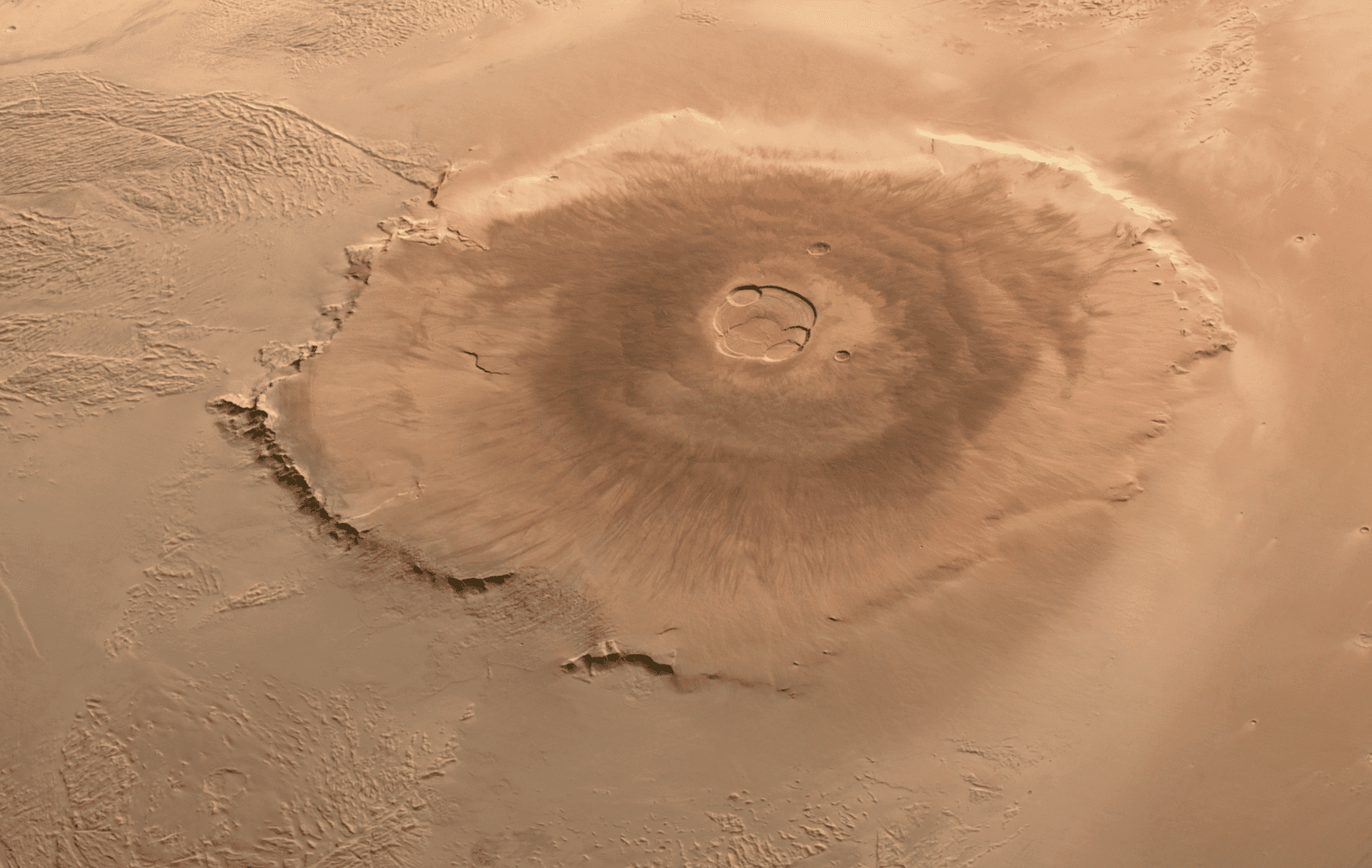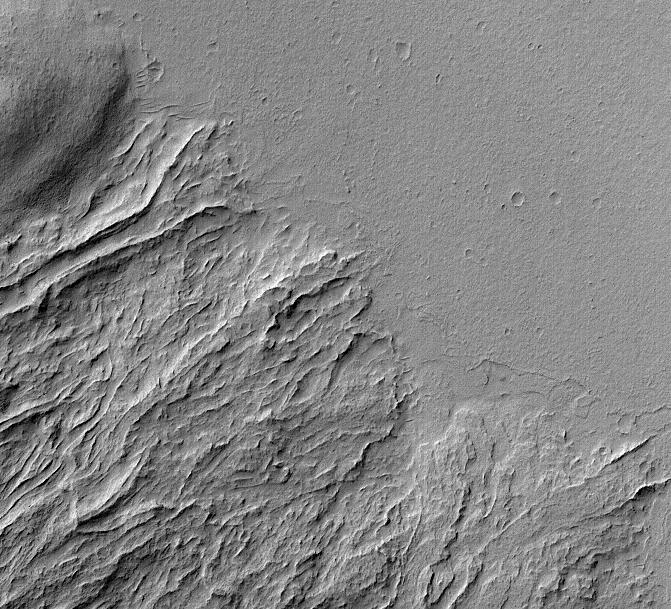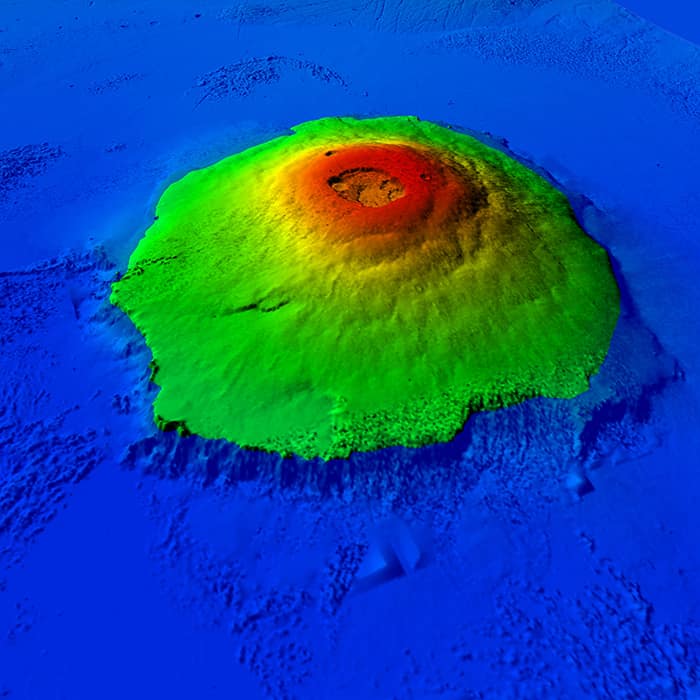Mars’ massive Olympus Mons volcano has long been an oddity — a big volcano, the size of Arizona, standing out in an otherwise fairly flat area. But this bizarre mountain may get even weirder. Now a new study published in Earth and Planetary Science Letters suggests it may have formed as a giant volcanic island in an early Martian ocean.
Water and mountains on Mars
Mars may be barren today, but it was once an environment much like our Earth, with rivers, valleys, and plate tectonics. In fact, there’s even some evidence that Mars once had an ocean.
The riverbeds, lakebeds, and even shorelines that have been discovered on Mars are all evidence supporting this theory. In fact, all this geological evidence points to a time when liquid water flowed freely across Mars. But it’s still hard to tell exactly what Martian oceans were like.
Now, a new study links this ocean to Olympus Mons — the tallest mountain not only on Mars but also in entire the solar system.
Olympus Mons is a shield volcano that measures a whopping 21.9 km (14 mi) from base to peak. For comparison, the tallest mountain on Earth from base to peak is Mauna Kea (not Everest) in Hawaii, at 10.2 km (6.3 mi).
The new research spearheaded by the Université Paris-Saclay suggests that the Martian volcano may have formed as an island, much like Mauna Kea.
A big volcanic island
Olympus Mons is located on the Red Planet’s northwestern slope of the Tharsis rise, a vast volcanic plateau. It has a gently sloping profile as it was formed not by one eruption, but by many. Geologists believe that numerous highly fluid, basaltic lava flows that poured from volcanic vents over a long period of time formed Olympus mons.

The new research confirms this idea. It found that Olympus Mons was most likely created by prolonged hot-spot volcanism above a stationary lithosphere in the absence of plate tectonics. The authors also state that the volcano’s unusual shape is consistent with that of active volcanoes on Earth.
But the study suggests even more: that judging by its topography, the volcano was likely surrounded by water.
“(T)he upper tips of the (southeastern and northwestern sectors) inward concave escarpments surrounding Olympus Mons supports contrasted lava viscosity at shore level,” the study authors write. “This leads us to propose that Olympus Mons was a former volcanic island surrounded by liquid water.”
In order to reach this conclusion, researchers analyze geological and topographical features on Olympus Mons and its surrounding region. They then compared these features to similar ones they found here on Earth.
A particularly important clue came from sea-air transitions. Sea-air transitions on Olympus Mons are the site of significant slope breaks due to the abrupt change in lava viscosity. Lava flowing into liquid water likely formed the upper rim of the 3.7-mile (six-kilometer) high concentric main escarpment surrounding the volcano when the edifice was an active volcanic island over two billion years ago.
“Conspicuous slope breaks at the top of the main basal escarpment surrounding Olympus Mons are here interpreted as paleo-shorelines around a former volcanic island,” the authors write. “Similar features at Alba Mons further support the existence of an early ocean occupying the northern plains of Mars along the northwest edge of the Tharsis region.”

This idea is supported by other bits of geological information. For example, the presence of hydrated minerals on Earth’s surface is cited as evidence that liquid water was once more abundant than it is today, lending credence to the authors’ claim that their hypothesis is correct.
But without additional, on-site samples and information, it’s hard to draw definite conclusions.
The possibility of an early Martian ocean has significant consequences for how we conceptualize Mars’ climate and habitability. If Mars once had oceans, it’s possible that life as we know it could have thrived there. The authors noted that more research should be conducted in this area.
“Future spacecraft dedicated to sample return and/or rover equipped for in-situ dating on selected sites of Olympus Mons constitute a promising line of research for the future, which can have significant impact regarding the longevity of oceans and the potential fate of early life on Mars.”










